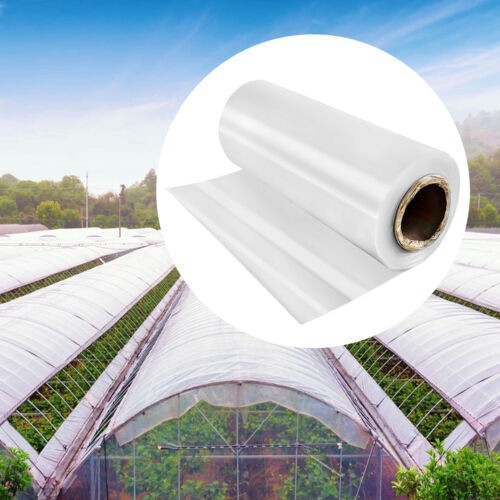In the realm of modern agriculture and horticulture, optimizing the growing environment is paramount. One effective way to achieve this is by utilizing greenhouse film, particularly the 6 mil greenhouse plastic. This material offers a balance between durability, light diffusion, and thermal insulation, making it a popular choice among growers. This article delves into the benefits and considerations of using 6 mil greenhouse plastic, highlighting its role in fostering healthy plant growth.
Understanding 6 Mil Greenhouse Plastic
The term “6 mil” refers to the thickness of the greenhouse plastic, with one mil equaling one-thousandth of an inch. At 6 mils, the plastic provides a robust barrier against environmental elements while allowing sufficient light transmission. This thickness strikes a balance between strength and flexibility, ensuring longevity and ease of installation.
Benefits of Using 6 Mil Greenhouse Plastic
- Durability and Strength
Greenhouse film at 6 mil thickness is designed to withstand various weather conditions. It offers resistance to tears and punctures, ensuring that the greenhouse structure remains intact even during adverse weather events. This durability reduces the frequency of replacements, providing cost savings over time. - Light Transmission and Diffusion
Light is a critical factor in plant growth. 6 mil greenhouse plastic typically allows for high light transmission, ensuring that plants receive adequate sunlight. Additionally, certain types of this plastic are designed to diffuse light, reducing the intensity of direct sunlight and promoting uniform growth. This diffusion helps in preventing sunburn on plants and enhances overall photosynthesis. - Thermal Insulation
Maintaining a stable internal temperature within the greenhouse is essential for plant health. 6 mil greenhouse plastic provides a degree of thermal insulation, trapping heat during colder months and reducing heat loss. This insulation helps in maintaining optimal growing conditions, leading to healthier plants and extended growing seasons. - UV Resistance
Exposure to ultraviolet (UV) rays can degrade greenhouse materials over time. High-quality 6 mil greenhouse plastic is often treated to resist UV radiation, extending its lifespan and maintaining its protective qualities. This UV resistance ensures that the plastic continues to offer effective protection for plants throughout its use.
Considerations When Choosing Greenhouse Film
While 6 mil greenhouse plastic offers numerous advantages, it’s essential to consider specific needs and conditions before making a selection.
- Climate Conditions
The local climate plays a significant role in determining the appropriate greenhouse film. In areas with heavy snowfall or strong winds, additional reinforcement or thicker materials may be necessary to ensure structural integrity. Conversely, in milder climates, 6 mil plastic may suffice. - Plant Types
Different plants have varying light requirements. While some may thrive under direct sunlight, others may benefit from diffused light. Understanding the specific needs of the plants being cultivated can guide the choice of greenhouse film to optimize growth conditions. - Installation and Maintenance
Proper installation is crucial for maximizing the benefits of greenhouse plastic. Ensuring that the film is securely attached and free from wrinkles can prevent potential issues such as wind damage or uneven light distribution. Regular maintenance, including cleaning and inspecting for damage, will prolong the life of the greenhouse film.
Conclusion
Incorporating 6 mil greenhouse plastic into agricultural practices offers a practical solution for creating an optimal growing environment. Its durability, light transmission properties, thermal insulation, and UV resistance make it a versatile choice for various greenhouse applications. By carefully considering specific needs and conditions, growers can select the appropriate greenhouse film to enhance plant health and productivity.

Leave a Reply
You must be logged in to post a comment.